Our Blog - Dinan, France
Down the road from Saint-Malo is Dinan (not to be confused with Dinard, that you saw in Part 1). Dinan is a bit inland, sitting on a hillside overlooking the Rance River. Dinan has been recognized since the 11th century, although a dolmen in ruins was round nearby indicating the area was inhabited back in the Neolithic time. Despite a fire in 1907 and bombardments in August 1944, there are many fine old buildings, some of which date from the 13th century. It was a fortified city and while it is not complete anymore, there is still a large section of the city walls including a part that can be walked round.
L'Hôtel Kératry is one of the many half-timbered houses here, although this one wasn't actually built here! It dates from around 1559 but up to 1935, it was in village about 80 kilometers from here. It was going to be torn down there and the town council here decided to buy it, move it, and reconstruct it here, as they wanted to protect the local heritage of the half-timbered houses.
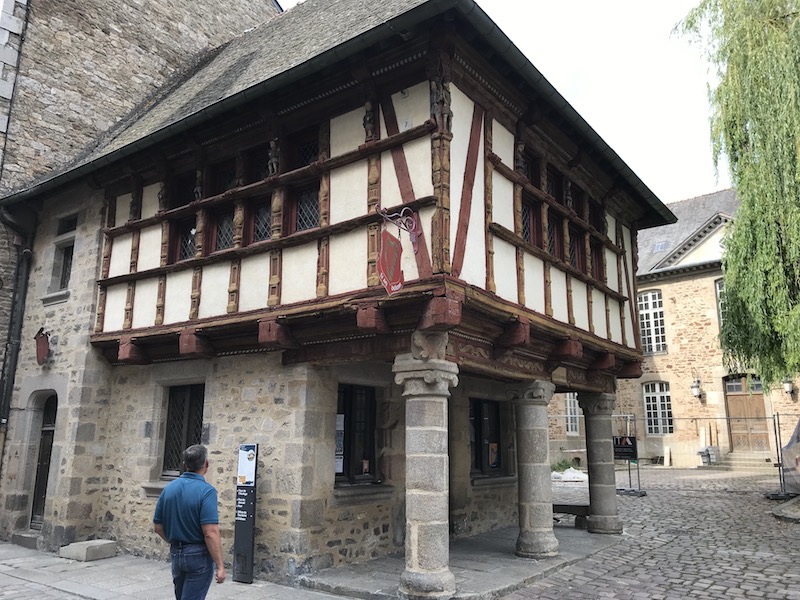
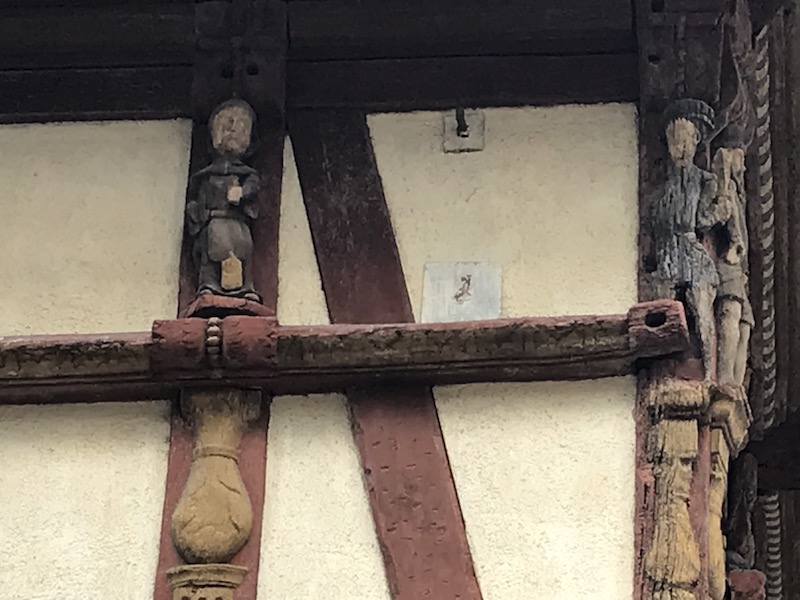
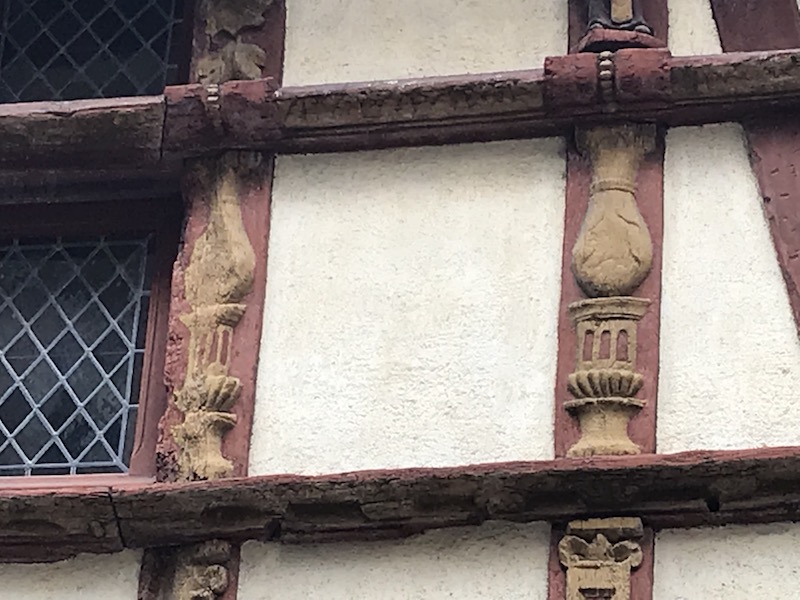
This is called Maison de La Mère Pourcel, or Mother Pourcel's House. It is another half-timbered house from the 15th century, but this one was actually built here. It was an inn starting in 1937 operated by Madame Pourcel, which is how it got the name. It has a really well-preserved wooden carving on one of the corners.
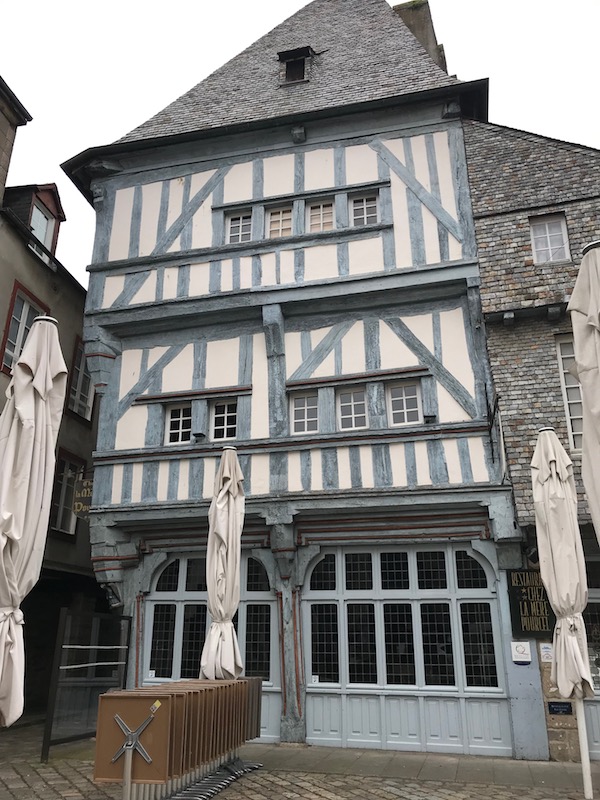
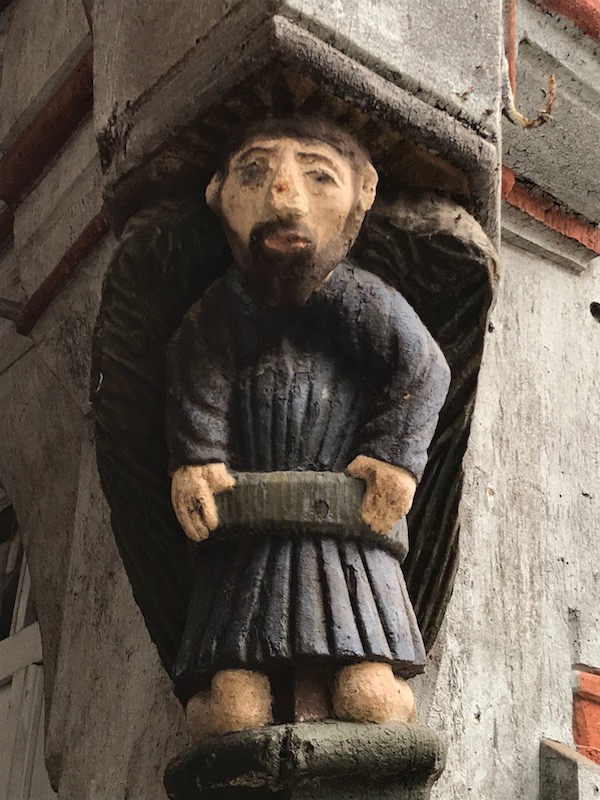
Embracing a range of architectural styles, Basilique St-Sauveur has a Romanesque south front, a Flamboyant Gothic façade, and Renaissance side chapels. Legend says that a knight was taken prisoner during the First Crusade and vowed that he would build a church dedicated to the Holy Savior and the Holy Trinity if he ever saw his country again. While there is no record of it, supposedly he got back to France around 1112 and built this church. Additional work was done in the between the late 1400's and late 1600's. You can split the church basically into two sections: the Romanesque part from the 12th century (ground floor of the west front and the south wall of the nave) and the Gothic part (top of the western facade, north wall of the aisle, transept, choir and the end of the choir behind the main altar). This first picture is the Romanesque porch, dating from the 12th century although the tympanum was carved in the 19th century. The last picture shows the difference with the Gothic side chapel from the outside.
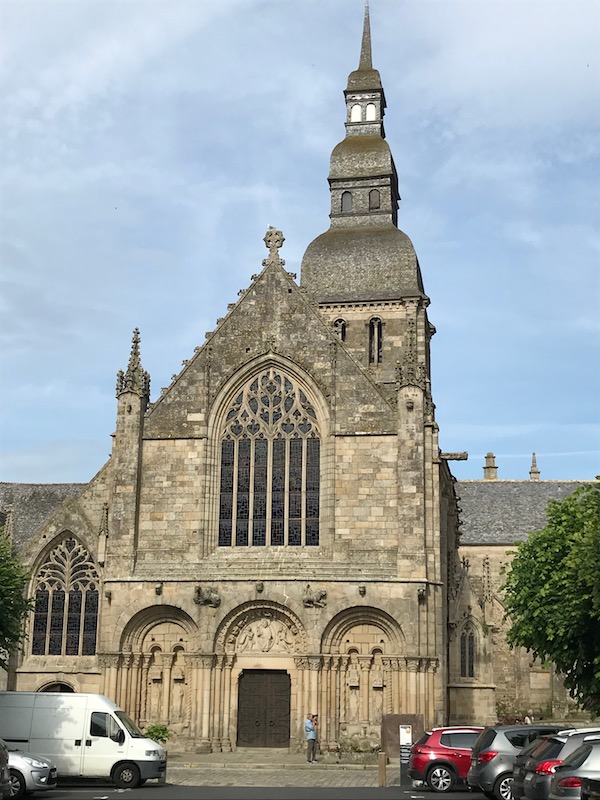
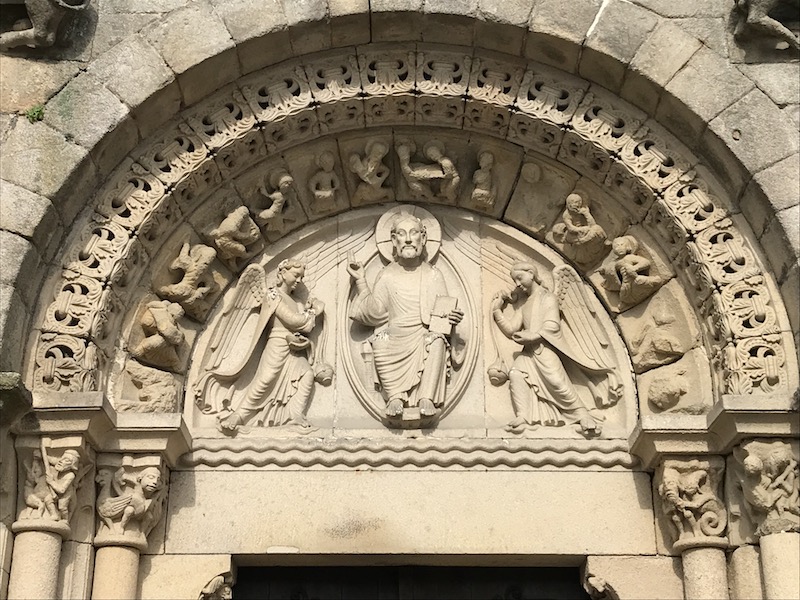
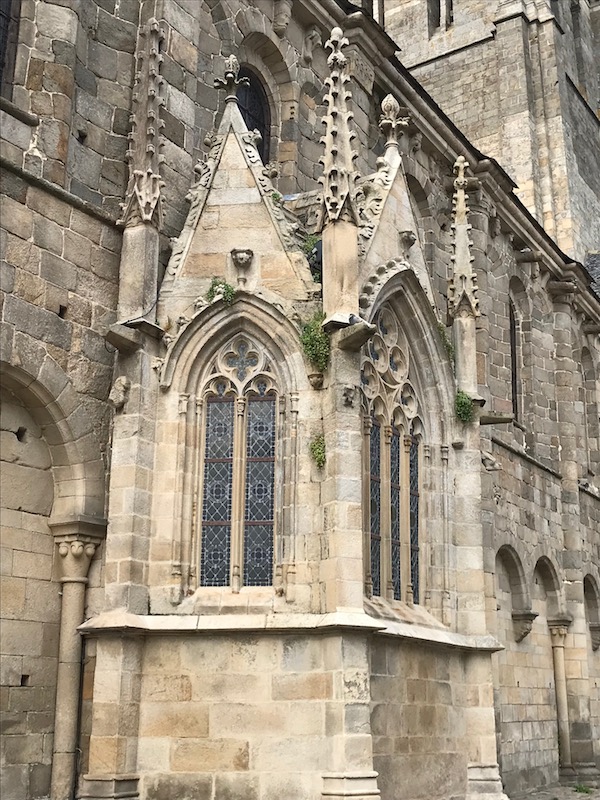
In the nave, you can also see the two styles. You can see the more pointed Gothic arches on the left of the first picture, but then the very Romanesque round arches on the right (more visible on the 2nd picture). But then in the middle of this Romanesque wall of round arches is 1 solitary Gothic pointed arch, which was a chapel added in the 15th century.
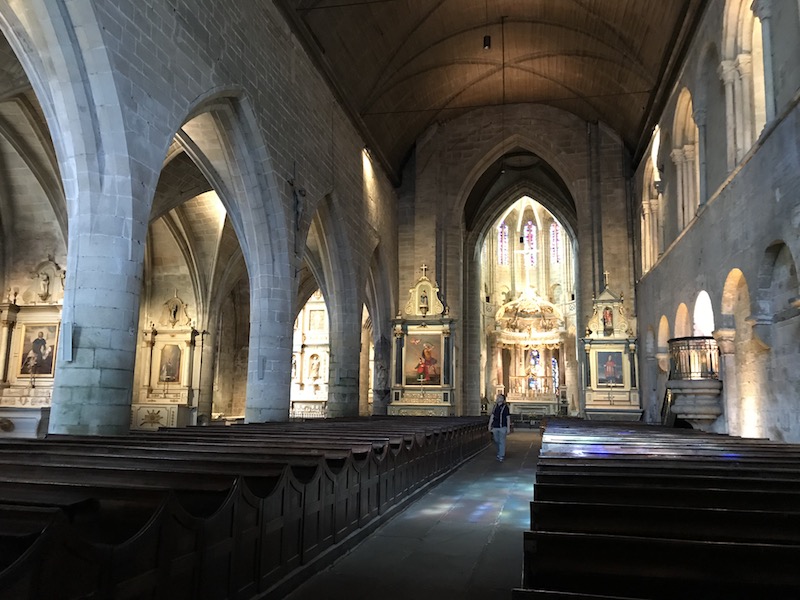
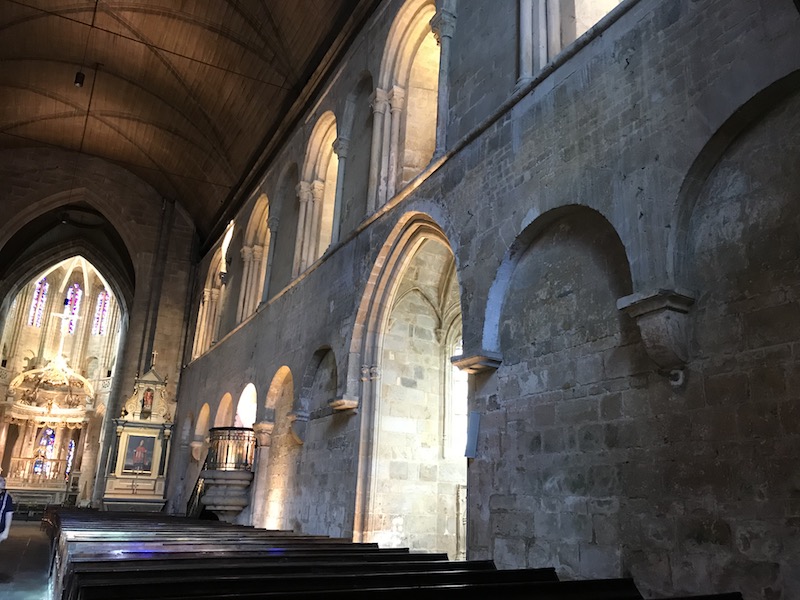
Most of the stained-glass dates from the 20th century although there are a few are older. If I didn't mess things up, this last one, which was in the Saint Mathurin's Chapel, is from the 15th century.


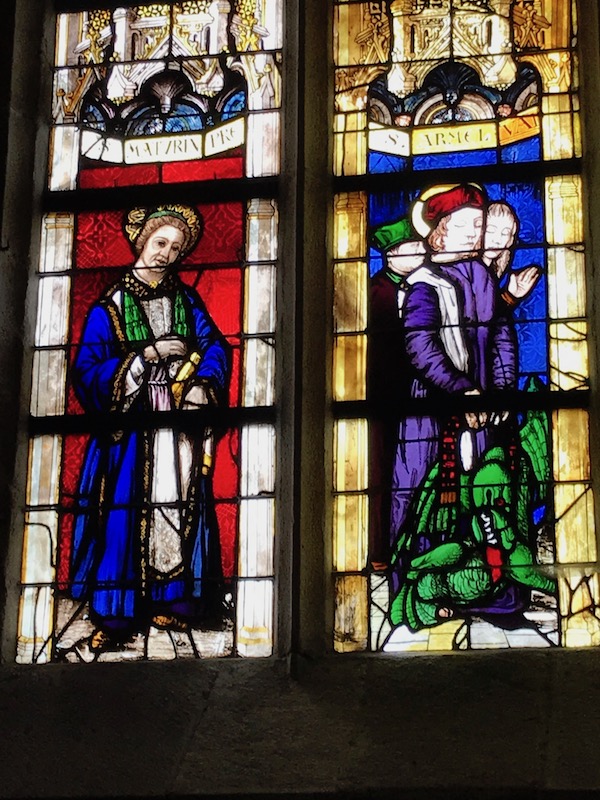
The high altar and baldachin date to the 18th century and I thought was beautiful.
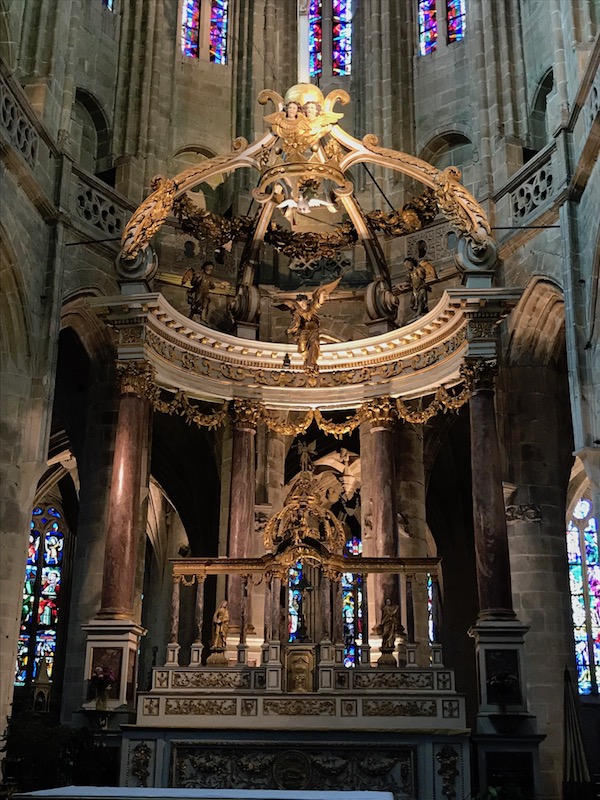
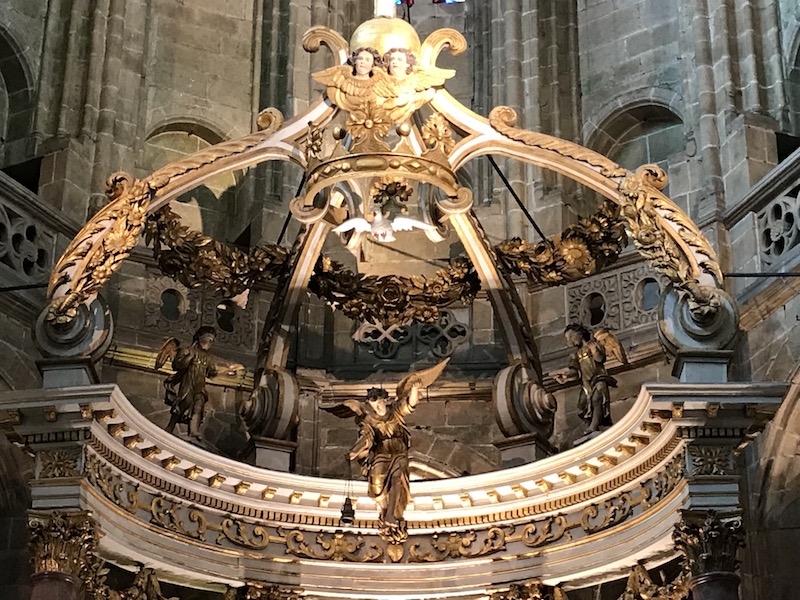
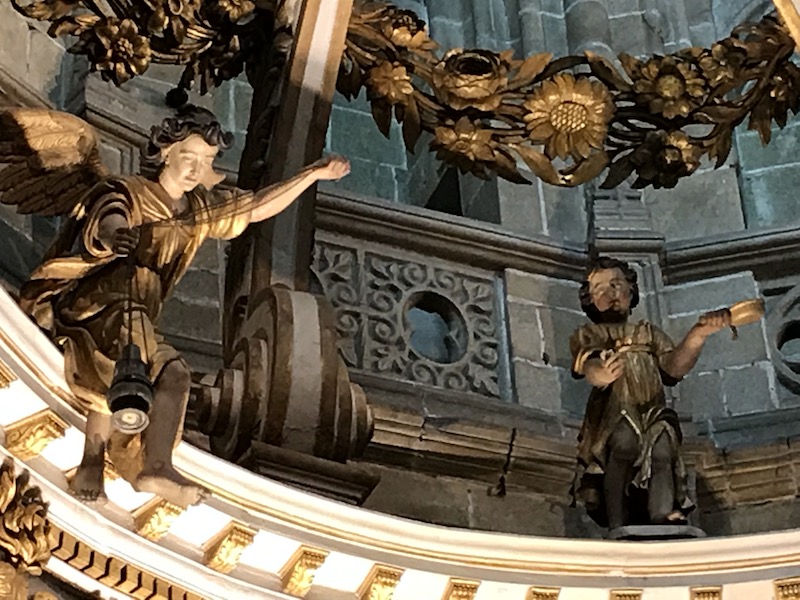
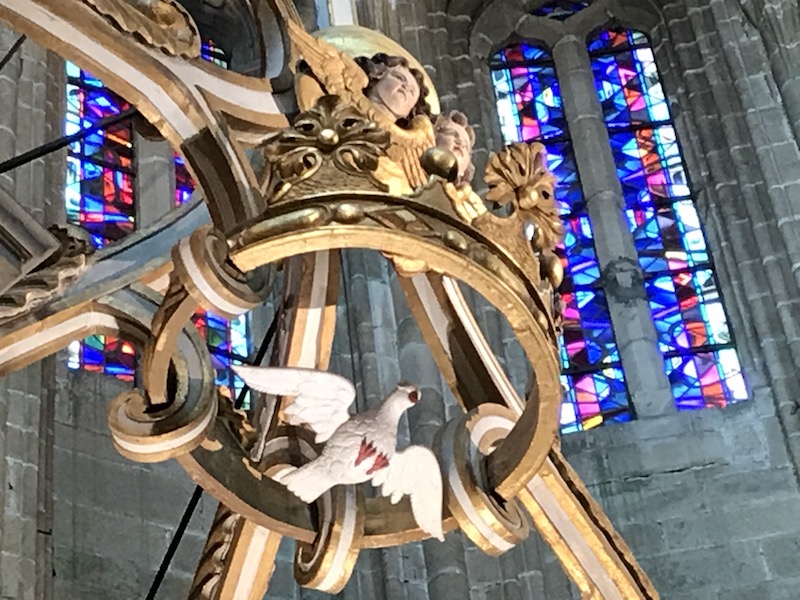
At the edge of the city walls, behind the Basilica, is an English garden and a walk around this section of the called called the 'Promenade of Duchesse Anne'. From here, you can see the 14th-century Saint Catherine's tower, a section of first fortifications built around the city, a 19th-century viaduct, and then down below, the Rance River and the former harbor.
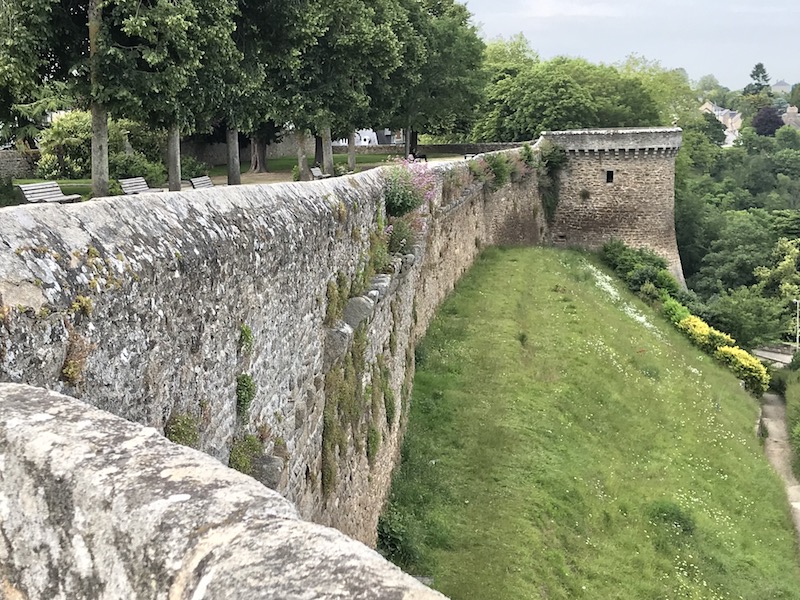
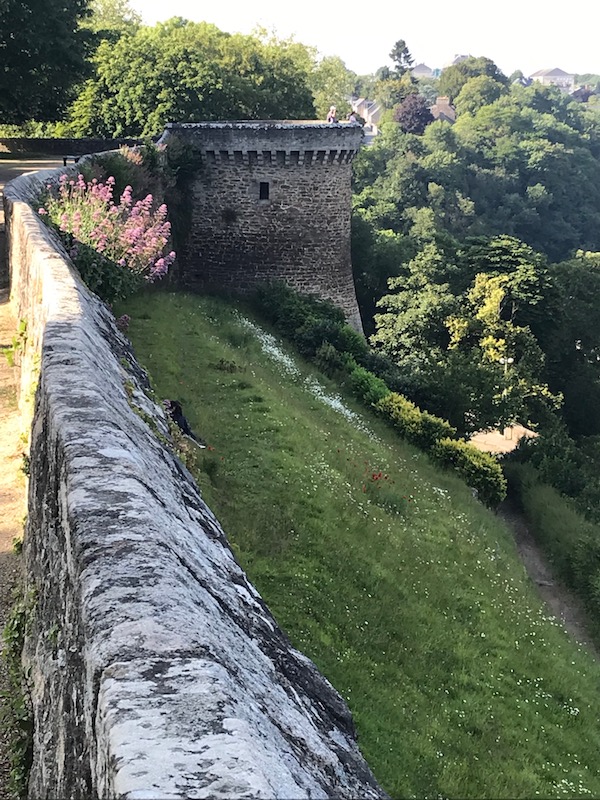
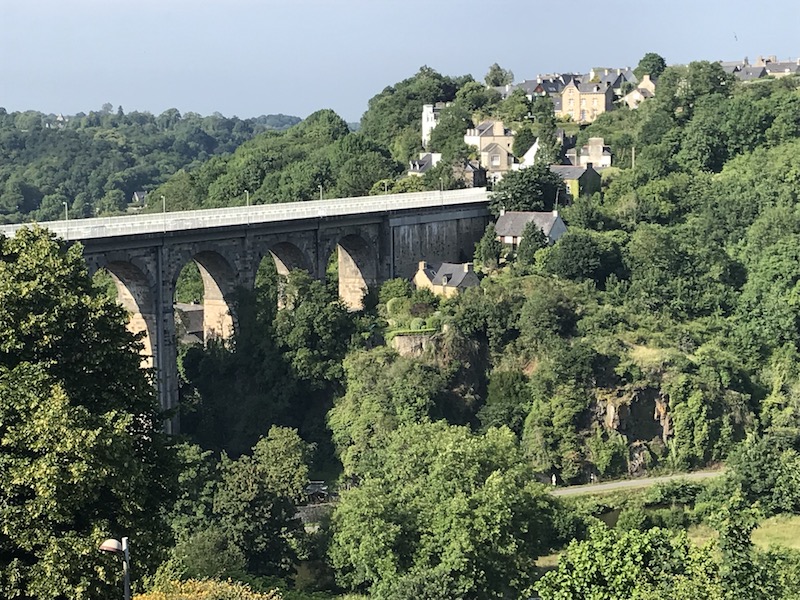

Here we are leaving the old fortified city through the La Porte du Jerzual, one of 4 gateways into the medieval city. With its two towers, it was the main access route to the city from the port until the 18th century. (1st photo is from the inside, and 2nd picture is looking back from the outside).
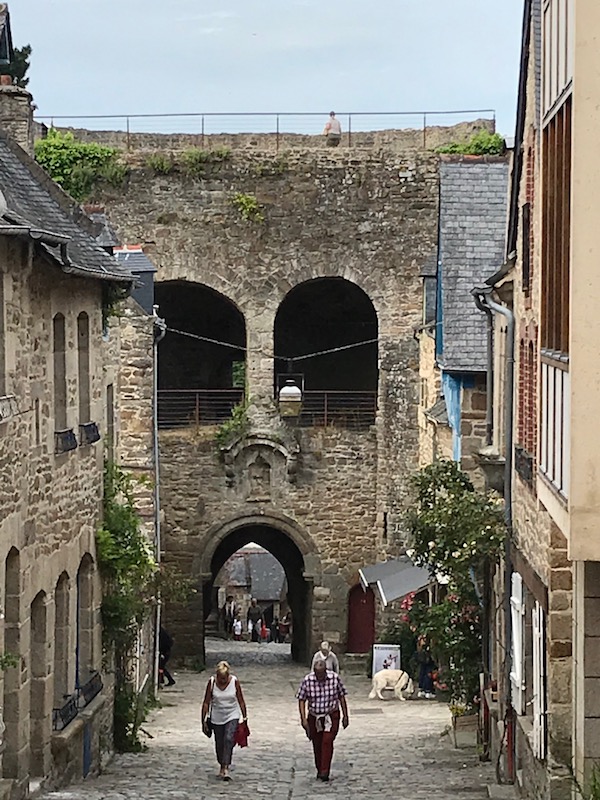

Rue de Jerzual is a cobblestone street that has been here since at least the 12th century, lined with half-timbered houses dating back to the 15th century. It leads downhill at a steep angle (35% at some points) all the way to the old bridge and the river.
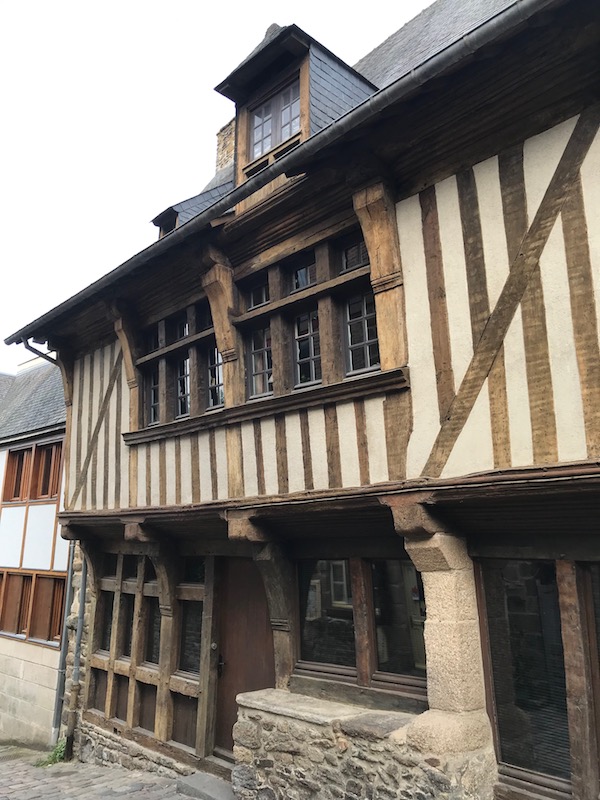

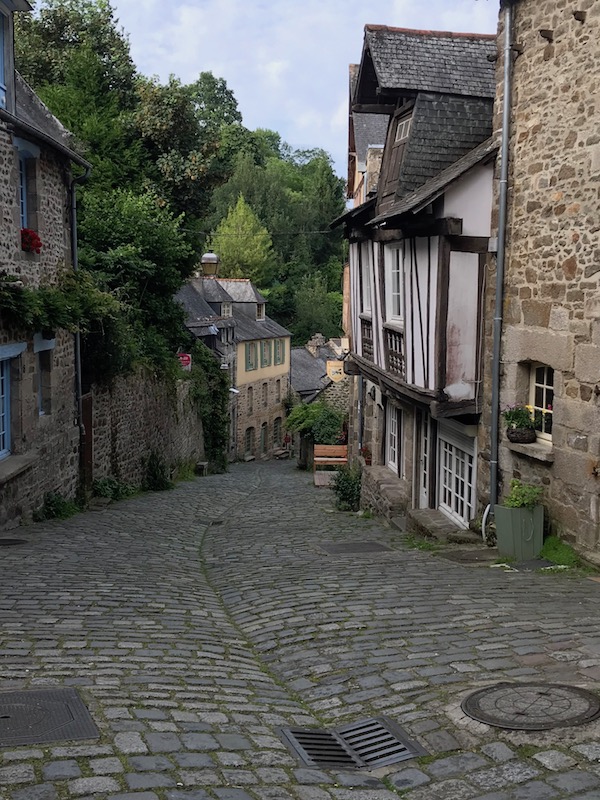
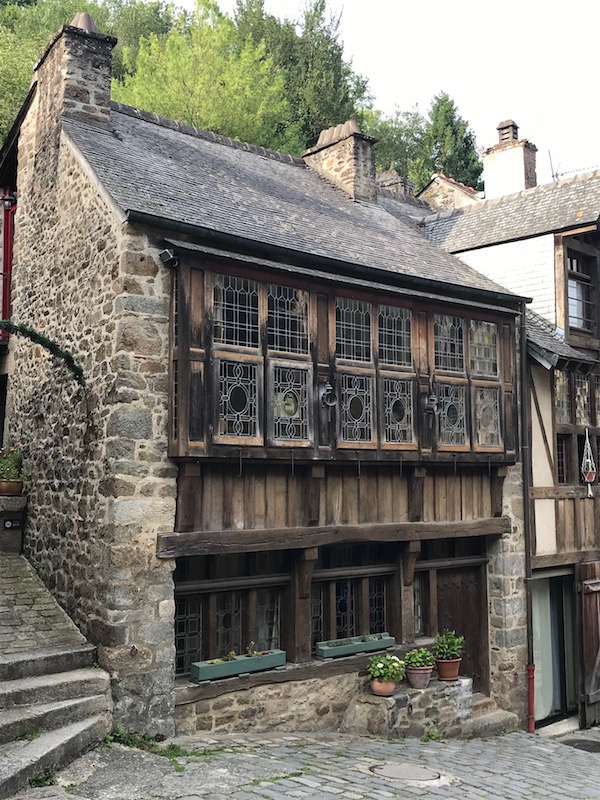

The largest house on the street is the Maison du Gouverneur (House of the Governor). Dating back to the 15th century, it was actually never inhabited by the Governor since it was "officially" outside of town. It is very typical for that time where the ground floor were shops and then upstairs were homes. In this case, it was inhabited by a weaver with shops/stalls on the ground floor and apartments on the upper floors. It was actually really hard to get it all into a good picture since the street was very narrow and the house was very wide.
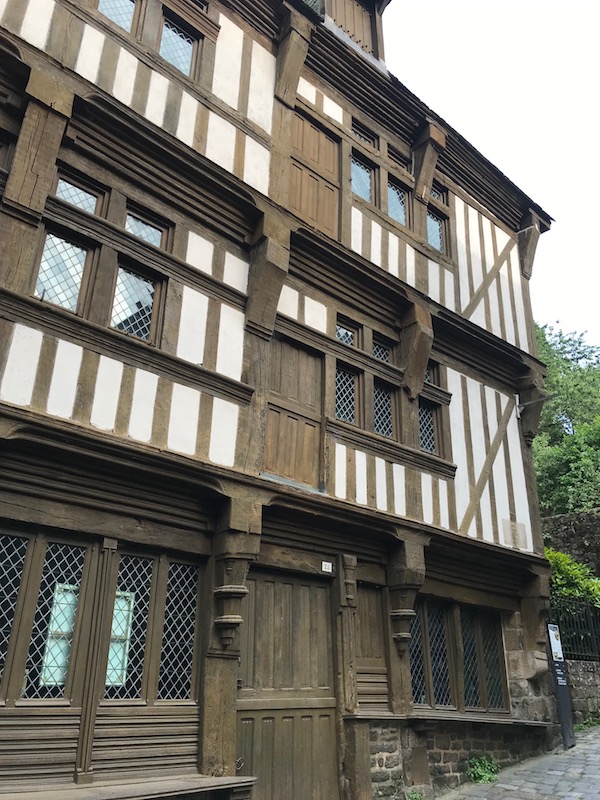
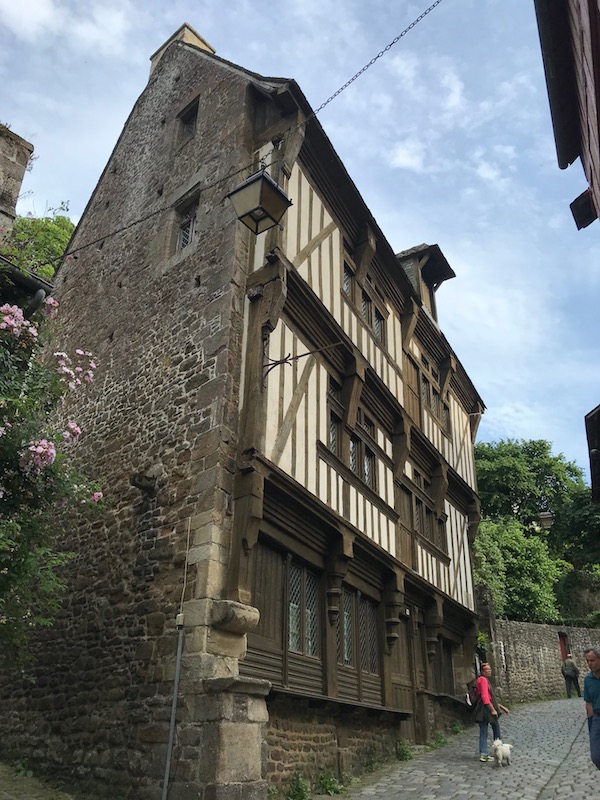
After going down the street, we arrived at what used to be the port which now is just a nice quiet area on the river. You can see how high the main part of the town is, up above where you see the tower of the old ramparts (which you saw earlier at the English Garden).

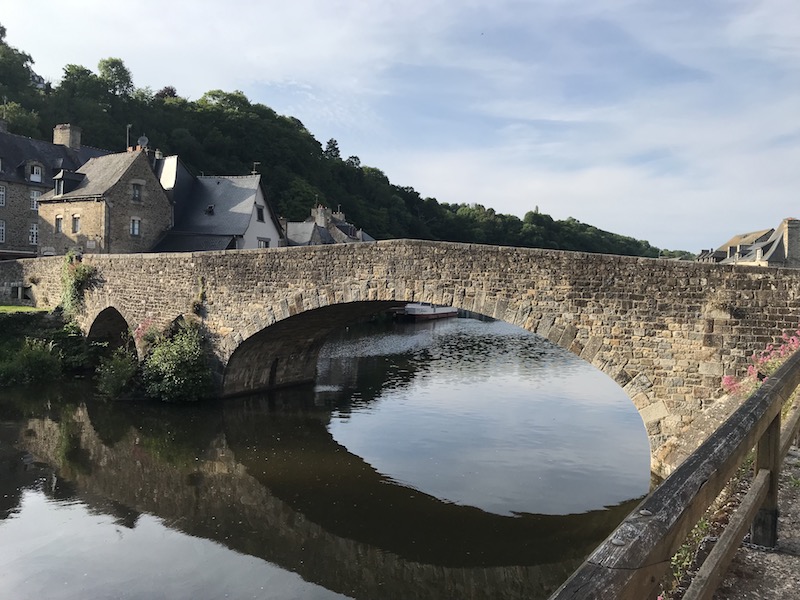
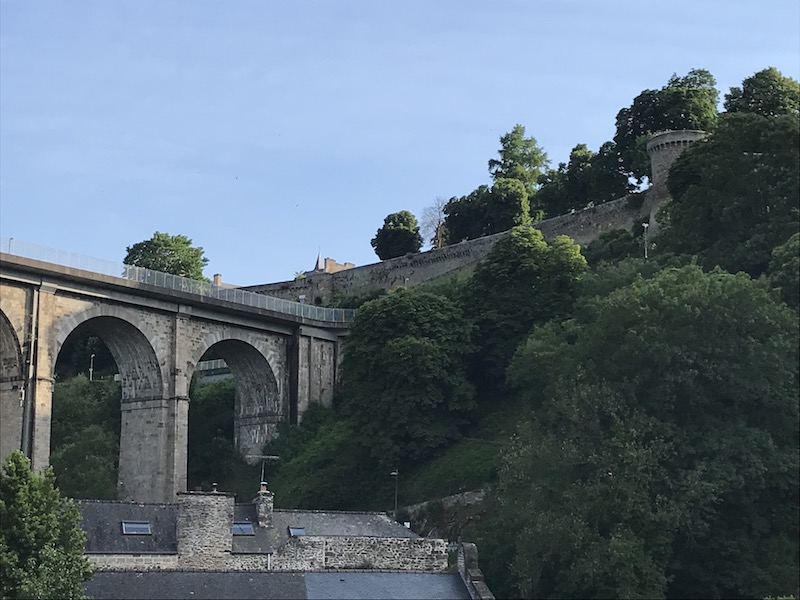
Back inside the city walls, the Church of Saint-Malo was built in the 15th century and is an excellent example of Flamboyant Gothic architecture within Brittany. The large triumphal side entrance (the side I am showing) was added in the 17th century in a more Renaissance style, with 2 classic arches, topped by triangular pediments with scallop decorations.

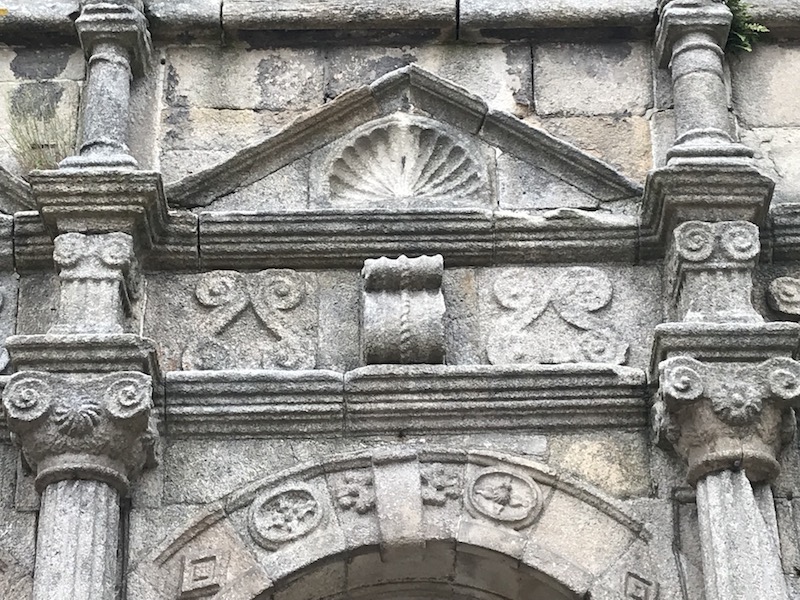
The interior was pretty plain, so the only thing I decided to take pictures of were the stained-glass windows. This first one shows the taking of the relics of Saint Malo across the Old Bridge and up Rue de Jerzual (you can see the stone bridge, the relics in the box, and the fortified walls and Saint Catherine tower at the top). The second shows Anne of Bretagne, queen of France and the founder of the church (which you can perhaps read at the bottom) that was created in 1926.


Then you have a more recent, early 20th century window which is dedicated to the "children of Dinan" who died for France (based on the clothes, after World War I).

Tour de l'Horloge, or Clock Tower, was built in the late 15th century and served as a watch tower, which you can totally believe since it gives you a great view of town. It seems I didn't take a picture of the actual tower, just us going inside and some of a display of the internal workings of the original clock from 1498.

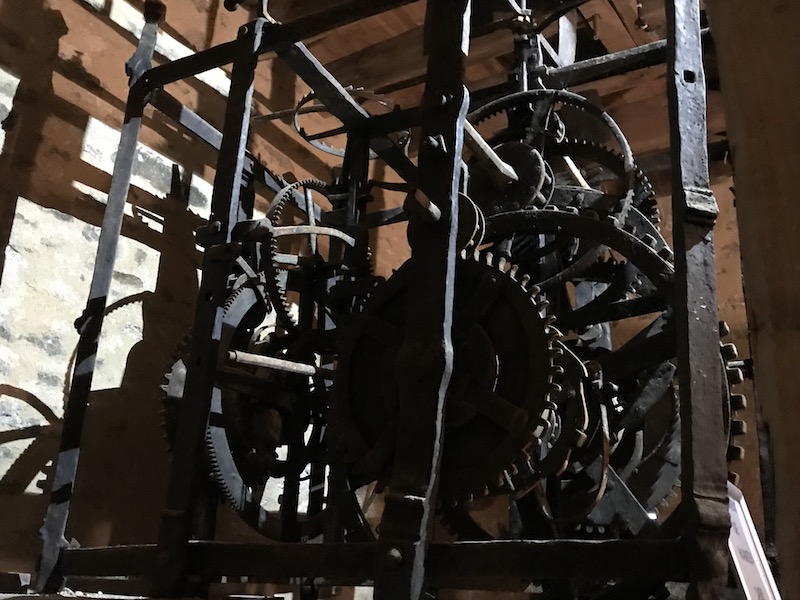
And now a few pictures from the top of things that you have already seen up close (Basilique St-Sauveur and the Church of Saint-Malo).
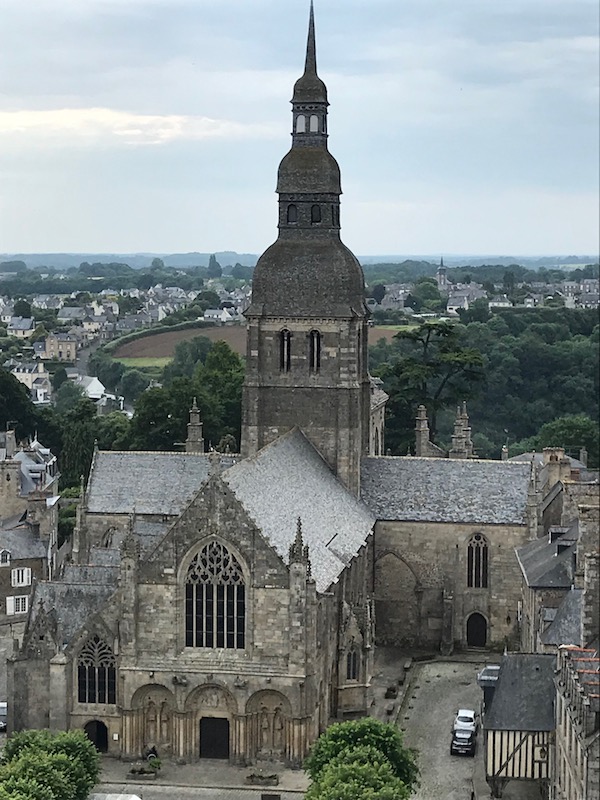

Probably the most impressive thing in town is the Château. In 1380, the Duke of Brittany decided to build a master tower to assert his authority. The fortress-like Château consists of a 2-story tower and a 14th-century keep that was used by the various soldiers to protect the area. The tower sits right next to one of the gates into the city and you can see how high the protective walls are next to it.
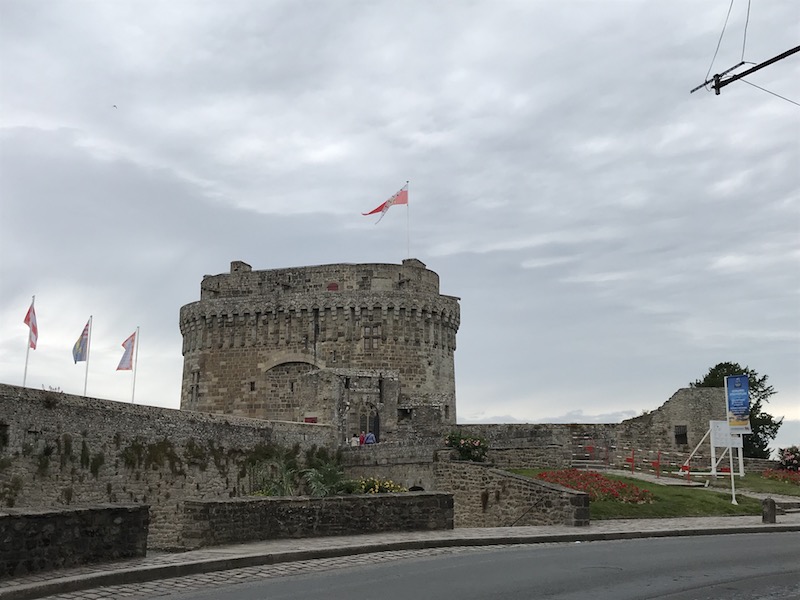

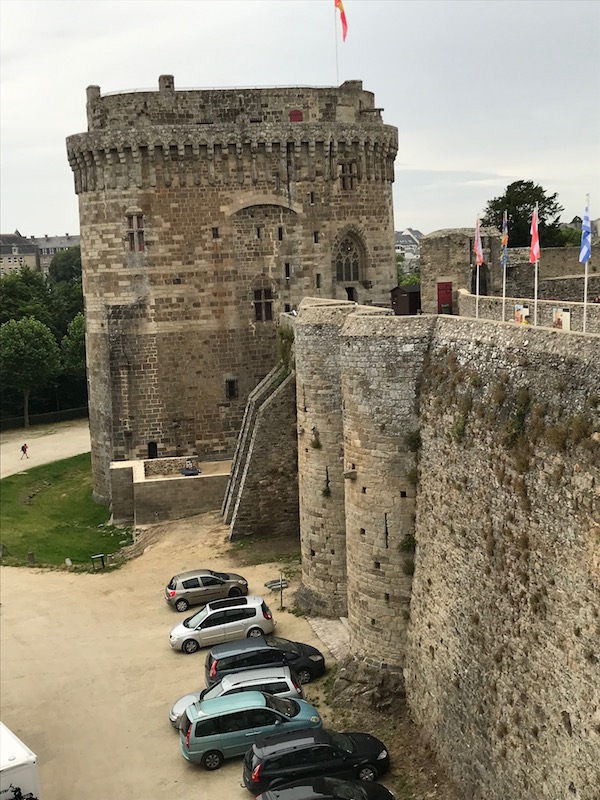

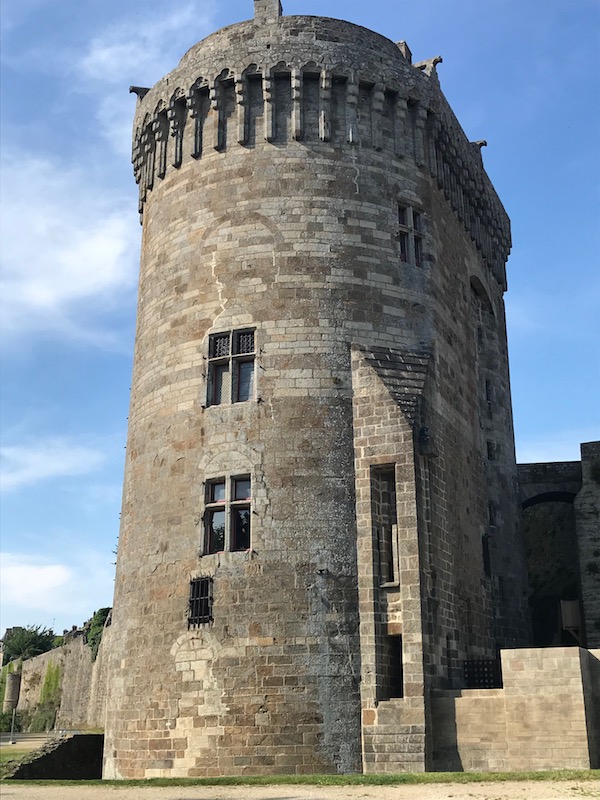
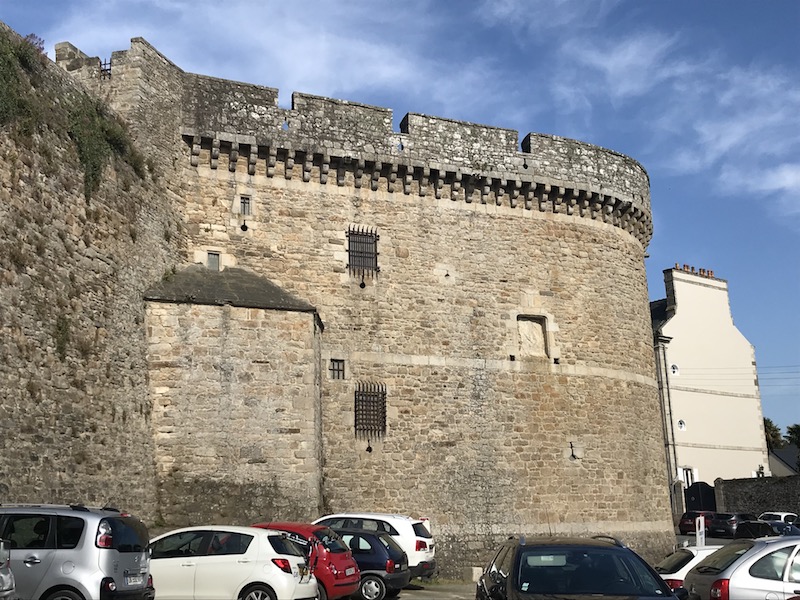
I thought this was an interesting picture to show how thick the walls are. This is not a room behind where Tom is sitting, that is actually the wall. There were various rooms that you could walk through that display how things may have been laid out (dining room, throne room, bedroom, chapel).

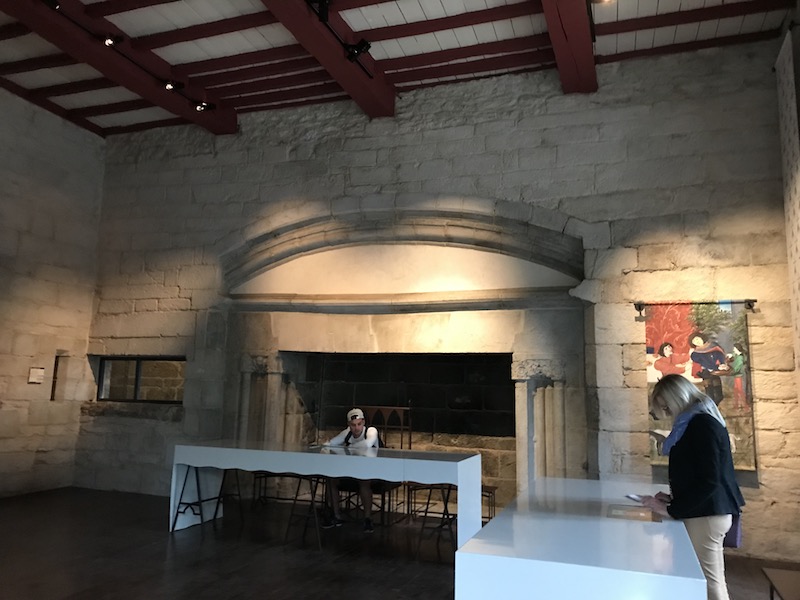
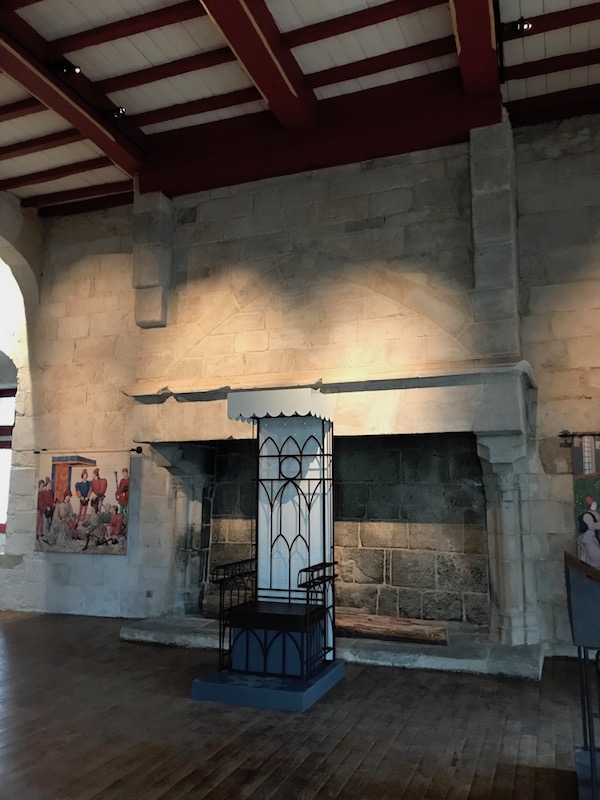
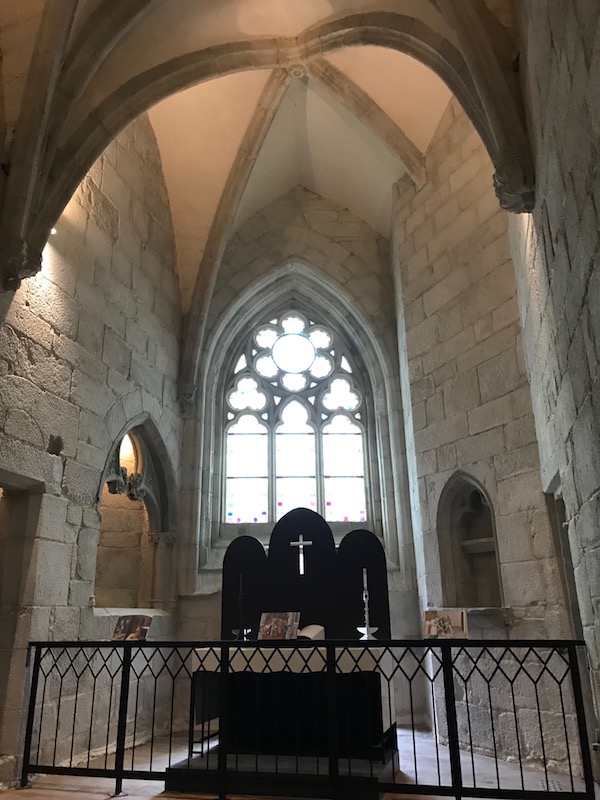

La porte du Guichet is between the two towers that you could see in one of the first pictures. It was walled up in 1590 to join the keep with the chateau, but then it was re-opened in 1932.
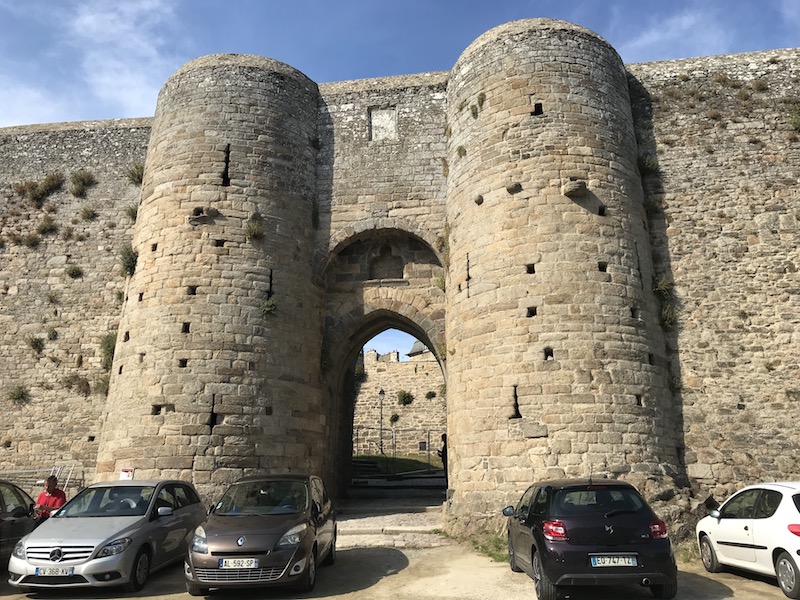
Another gate, the Saint Louis Gate, was built in 1620 to allow access from the South. It is in the style of a medieval gateway with an arch, drawbridge, and portcullis.
